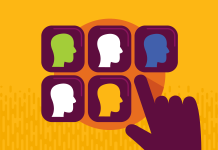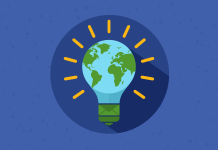Create your very own Auto Publish News/Blog Site and Earn Passive Income in Just 4 Easy Steps
Lifecycle marketing is about engaging customers with targeted messages throughout their journey with your brand—from when they first hear about you to when they become loyal advocates. By aligning your marketing efforts to each stage, you can build stronger relationships, keep customers coming back, and make the most of every interaction.In this guide, you’ll learn:
- The core ideas behind lifecycle marketing
- Key strategies for each stage of the customer journey
- How to use personalization for maximum impact
- Tactics tailored to different industries
- Real-world examples to inspire your campaigns
What is lifecycle marketing?
Lifecycle marketing is a strategy that involves engaging customers with the right message at the right time as they interact with your brand. The goal is to build lasting relationships by providing meaningful experiences that encourage customer satisfaction and loyalty. By matching your marketing to each customer journey stage, you can build trust, increase customer lifetime value, and turn buyers into brand advocates.
An effective lifecycle marketing strategy uses the “Trigger, Message, Channel” approach to make sure communication is timely and relevant:
- Trigger: An action or behavior that signals a customer is moving from one stage to another (e.g., adding an item to their cart but not completing the purchase).
- Message: A specific message designed for the customer’s current stage (e.g., a reminder email with a discount to encourage the purchase).
- Channel: The best way to deliver the message, such as email, push notifications, or ads.
Despite the clear benefits, only 44% of marketers use lifecycle emails to activate, engage, and retain customers—leaving a significant opportunity on the table. Many marketers find lifecycle emails more complex to strategize and measure compared to simpler, one-off promotional emails. But in an increasingly competitive market, those who can effectively tap into lifecycle strategies stand to build stronger, more sustainable customer relationships.
“It used to be easier to raise money and say ‘let’s just throw more ads!’ or ‘let’s plug retention and onboarding problems by just putting more people at the top of the funnel.’ And now that’s no longer the case, and people have some holes that we need to plug.”
Customer lifecycle marketing
Customer lifecycle marketing focuses on the entire customer experience, covering all interactions with your brand over time, not just the initial purchase.
Key differences:
- Covers a broader scope, including post-purchase stages like retention and advocacy.
- Focuses on long-term customer value, not just quick conversions.
- Aims to build lasting relationships through consistent, valuable interactions.
Lifecycle email marketing
Lifecycle email marketing focuses on how email can support customers at each stage of their journey. It allows for highly personalized and timely communication.
Key differences:
- Uses email as the main communication channel.
- Relies on email behavior data (opens, clicks, etc.) as key triggers.
- Enables automated and scalable personalization through email sequences.
What are the lifecycle stages?
Lifecycle marketing is all about guiding your customers through the different stages of their journey with you, and a big part of that is creating content that resonates at each stage. Whether they’re just discovering your brand or you’re trying to win them back after a period of silence, the format and delivery of your content make all the difference. Here’s a streamlined approach for each stage:
1. Awareness
At the awareness stage, it’s all about grabbing attention. Your target audience doesn’t know much about you yet, so this is your chance to make a bold first impression.
2. Engagement
Now that they’ve noticed you, it’s time to keep them interested. This is where you go a little deeper, inviting your audience to interact and learn more.
3. Consideration
At this stage, they’re weighing their options. Why should they choose you? Your content needs to make that decision easier.
4. Activation and conversion
This is the moment of truth—they’re ready to commit, but they need that final nudge.
5. Onboarding
Congrats, they’re in! Now you need to make sure their first experience with your product or service is a smooth one.
6. Retention
Once they’ve been with you for a while, it’s easy for them to drift if they don’t feel the love. This is where you keep things fresh and remind them why they stuck around in the first place.
7. Loyalty and advocacy
Your best customers deserve something special. They’re the ones who’ll shout your praises from the rooftops if you treat them right.
8. Reactivation and win-back
For those who’ve drifted away, it’s not too late. Show them you’re still here, still offering value, and that you’ve got something new to offer.
Get email insights from nearly 1,000 marketers
Dive into the State of Email Reports for the latest trends, innovations, and best practices across the email marketing industry.
Get The Report
Key lifecycle marketing channels
Maximizing your reach across various channels is crucial for effective lifecycle marketing. While 55% of marketers use promotional emails, fewer use lifecycle emails that guide customers through every stage of their journey. Combining both can build stronger, longer-term relationships beyond one-time sales.
Email as a lifecycle marketing channel
Email remains a go-to channel for personalized communication and building relationships. And while newsletters are the second most-used email format, they’re still an underutilized asset. Newsletters let you regularly show up in your customers’ inboxes with valuable content, reinforcing trust and loyalty over time.
As Dan Oshinsky from Inbox Collective shares, “I would love to see more organizations build newsletters into their overall strategy because it is such a powerful relationship-building tool. The more you build those relationships using newsletters, the stronger your marketing strategy will be in the long run.”
In addition to email, here’s how to leverage additional channels for optimal results:
- Social media: Great for building brand awareness and fostering community.
- Content marketing: Educates and inspires at every stage with valuable content.
- SEO and PPC: Increases visibility and attracts high-quality leads.
- Retargeting: Re-engages potential customers based on previous interactions.
- Mobile: SMS and push notifications provide timely, direct communication.
- Events and webinars: Deepen relationships and build trust through direct interaction.
Combining these channels strategically ensures a seamless, omnichannel experience that guides customers through their journey with your brand.
Components of a lifecycle marketing strategy
A strong lifecycle marketing strategy involves:
- Customer segmentation: Target messages based on behavior and preferences.
- Personalized content: Create relevant content that speaks to each segment’s needs through personalized email.
- Automated workflows: Trigger campaigns based on customer actions for timely outreach.
- Data analytics: Use data like your email analytics to continuously refine your approach.
- Cross-channel integration: Ensure a consistent message across all touchpoints.
- Customer feedback loop: Regularly collect feedback and adapt strategies accordingly.
- Retention and loyalty programs: Offer exclusive perks and support to keep customers engaged.
- Testing and optimization: Continuously test different elements of your campaigns. Use A/B email testing to refine your messaging, design, and timing for maximum impact.
Cross-departmental collaboration and data integration
To succeed in lifecycle marketing, breaking down silos between departments and integrating data across teams—like Marketing, Sales, and Customer Service—is essential. A unified approach helps everyone share valuable customer insights, ensuring every interaction is relevant and personalized.
As Ramli John from Appcues highlights, “We need to connect with other teams to understand what they’re doing. When we build those relationships, we get a clearer picture of how everything fits together, and that makes for a stronger customer experience.”
For example, if Customer Service receives feedback about a recurring issue, Marketing can use this data to create content that addresses this pain point, such as an FAQ guide or a troubleshooting webinar. Sales can leverage this same information to personalize their outreach, offering potential solutions during follow-up conversations. When all departments work together, you create a holistic experience that nurtures trust and brand loyalty throughout the customer lifecycle.
“There’s supercharged excitement about what AI can fuel, like better personalization and smarter triggers. In between is all of the data, which is just a dumpster fire. In a lot of cases the data is scattered, fragmented, and conflicting. I think the data barriers are really intense. There’s nothing sexy about most of the data structure stuff. But it’s absolutely essential.”
How personalization strengthens your lifecycle strategy
Personalization turns a standard marketing strategy into a great one. While 69% of marketers feel confident that their email service provider (ESP) handles personalization well, sticking to the basics—like merge tags—isn’t enough to make your emails stand out. True, advanced personalization, such as live content, remains underutilized due to data gaps, resource limitations, or a lack of technical know-how. The silver lining? These hurdles have clear solutions.
“Research has shown that when emails are personalized with the first name only, it’s actually as likely to hurt email performance as it is to help it. People have seen this trick. They don’t appreciate it when you only personalize the envelope content. It’s a disconnect when they encounter it on one level and then dig down deeper, and it seems like it’s just content for everybody.”
Harness the power of email personalization
Discover how to better connect with your audience, deliver tailored content, and drive engagement with email personalization.
Personalize Better
Move beyond basics with advanced personalization techniques
Personalization goes beyond just a name in the subject line. It’s about creating real-time dynamic content that speaks directly to each subscriber’s unique preferences, behaviors, and needs. Think beyond static content—embrace dynamic content automation, live polls, personalized images, and interactive elements like email scratch-offs or countdown timers. These methods deliver experiences that feel relevant and timely, making personalization scalable without added complexity.
Boost engagement and conversions with relevant content
Personalization is more than a strategy—it’s a driver of action. Emails tailored to subscriber interests using real-time data—like rule-based images or dynamic product feeds—can dramatically increase click-through and conversion rates. In fact, subscribers are 76% more likely to click on content that speaks to them. Elements like live content that updates when opened create urgency and encourage immediate action, making it easier for your subscribers to convert.
Foster loyalty through timely, contextual messaging
Email personalization isn’t just about winning new customers; it’s vital for keeping the ones you have. When you use behavioral and contextual data to send the right message at the right moment, you reinforce your value and understanding of your customers. Whether it’s a special offer revealed through a scratch-off or a recommendation based on recent purchases, these timely, personalized interactions deepen emotional connections to your brand. This is key to nurturing long-term loyalty.
Create memorable experiences with live content
Real-time relevance is what keeps customers coming back. Live email content—like interactive maps, weather updates, or add-to-calendar options—creates memorable experiences that stand out in even the most crowded inboxes—turning one-time buyers into repeat customers and brand advocates.
Leverage data for maximum personalization impact
The backbone of effective personalization is data. By integrating insights from your CRM data, product feeds, and past interactions, you can craft content that aligns with each subscriber’s unique needs and lifecycle stage. Advanced targeting using contextual triggers or dynamic automation ensures every email feels uniquely tailored, leading to a 96% increase in revenue generated from emails.
Scale personalization efficiently
Scaling personalization doesn’t have to be overwhelming. Quick-start templates and flexible design options make it easy to create inspiring personalized emails without needing advanced coding skills. Dynamic content automation allows you to set rules once and apply them consistently across campaigns, saving time and ensuring personalization at scale.
Keep innovating to meet subscriber expectations
Personalization is not a one-and-done tactic—it evolves with your audience. By using a robust personalization platform that keeps adding new features—like interest signals, product feeds, and advanced targeting—you keep your emails fresh and engaging. Regular innovation in your personalization strategy keeps your brand ahead of the competition and in sync with what your audience wants.
Use AI-driven personalization tools
AI tools can unlock deeper levels of personalization by analyzing customer behavior, predicting future actions, and adjusting content automatically. AI can identify patterns in user behavior to segment audiences and deliver targeted recommendations. This approach helps create one-to-one experiences that truly resonate and drive meaningful customer engagement.
Engage with 1:1 experiences
Deliver personalized content at scale. Use live polls, dynamic content, and advanced targeting to drive results.
Personalize Now
Creating effective lifecycle email marketing campaigns
Building effective lifecycle email marketing campaigns involves crafting specific strategies for each stage of the email customer journey. However, one of the challenges is that 51% of marketers need two weeks or more to create a single email. This time constraint makes it difficult to implement lifecycle emails effectively.
To build effective lifecycle marketing campaigns, focus on crafting specific strategies for each stage. Email automation is a top priority to help you send the right messages at the right time without needing to do it manually, saving time and keeping your communication relevant.
“We’ve been playing checkers for too long and not enough chess. By thinking more holistically and diversifying our investments with automation, we can move the needle further. We just need to make that mindset shift.”
Here’s how to strategically use email marketing across key stages:
- Awareness campaigns: Start with a welcome series to introduce your brand and share valuable resources like guides or checklists. Use SEO-optimized blog content and social media ads to drive traffic and encourage sign-ups.
- Engagement campaigns: Nurture interest with drip campaigns that provide relevant content based on customer behavior, such as product comparisons or helpful tips. Retarget interested subscribers with personalized emails.
- Conversion campaigns: Simplify the buying process with clear CTAs and incentives like discounts or free trials. Use abandoned cart emails to recover potential lost sales.
- Onboarding campaigns: After a purchase is made, the focus shifts to onboarding, ensuring customers get the most out of their purchase and setting the foundation for a long-term relationship. Send a welcome email series that includes product tutorials, setup guides, and personalized tips tailored to their purchase. This helps reduce buyer’s remorse, encourages product usage, and builds confidence in your brand.
- Retention campaigns: Keep customers engaged by highlighting new features, offering exclusive content, or requesting feedback. Loyalty programs and personalized recommendations help deepen connections.
- Loyalty and advocacy campaigns: Reward your most loyal customers and encourage them to advocate for your brand. Create campaigns that acknowledge their support, such as exclusive previews of new products, special discounts, or invitations to VIP events. Referral programs incentivize them to spread the word about your brand, leveraging their loyalty to attract new customers.
- Reactivation and win-back campaigns: Win back inactive customers with targeted emails that offer special promotions or highlight new products. Remind them of the value they previously found in your brand.
Industry-specific lifecycle marketing strategies
Each industry has its own nuances, customer expectations, and regulatory environments. To stand out, your lifecycle marketing strategies need to be finely tuned to these specific contexts. Below, we provide guidance on crafting targeted lifecycle marketing strategies for different industries.
Retail & eCommerce
For retail and eCommerce, it’s all about creating seamless and personalized experiences. Capture attention with SEO-optimized content and influencer collaborations to drive awareness. Keep potential customers engaged with retargeting ads and a frictionless checkout process. Build loyalty with programs that reward repeat purchases and deliver personalized recommendations that keep customers coming back.
SaaS
In SaaS, demonstrating value and removing barriers is key. Engage potential customers with insightful content, free trials, and ROI calculators to illustrate impact. Keep them engaged with targeted email nurturing and in-app messaging. Regular updates on new features help to retain users, reduce churn, and turn satisfied customers into advocates through compelling success stories.
Financial services
For financial services, trust and clarity are crucial. Use thought leadership content and personalized emails to engage and offer insights tailored to customer needs. Simplify the journey with easy-to-navigate application processes and one-on-one consultations. Stay connected with regular updates and practical financial tips to keep your brand top of mind.
Healthcare
In healthcare, education and trust are essential. Share valuable, educational content that establishes your expertise and use targeted newsletters to engage patients. Be clear and transparent about services and pricing to support decision-making. Make the appointment process seamless and encourage loyalty with personalized follow-ups and helpful health tips.
Measuring the success of lifecycle marketing
To see the real impact of your lifecycle marketing efforts, you need to track the right metrics. These KPIs (key performance indicators) give you a clear view of what’s working, what needs tweaking, and where to double down.
Improving customer retention is a top goal for over a third of marketers, but surprisingly, it didn’t rank in the top five for importance.
“Customer retention is so hard to measure. Marketers and email marketers are only just getting to the point where they can calculate the exact ROI or conversion rate of email. Going beyond that to see the impact of an email program on the customer lifecycle requires plugging into so many different teams and tools and people.”
This misalignment indicates a need for marketers to prioritize retention metrics more actively. By focusing on retention as a key metric, you can align your lifecycle email strategy to foster deeper customer relationships, leading to higher lifetime value and stronger loyalty.
- Customer lifetime value (CLV): CLV shows the total revenue a customer brings in over time, helping you understand the value of retention and loyalty.
- Customer acquisition cost (CAC): CAC tells you how much it costs to bring in a new customer—compare it with CLV to ensure your acquisition efforts are worth the investment.
- Retention rate: This metric tracks how well you’re keeping customers over time — a high rate shows your customer retention strategies are working.
- Customer effort score (CES): CES measures how easy it is for customers to interact with your brand, and lower effort means higher satisfaction and loyalty.
- Engagement scores: Engagement scores track how well customers interact with your content, showing how effectively you’re guiding them through the lifecycle.
- Conversion rates: Conversion rates measure how well you’re moving customers from one stage to the next, helping identify where to improve.
- Email marketing metrics: Track open rates, click-through rates (CTR), and unsubscribe rates to see how well your emails are performing. Take a look at our top email marketing metrics you should be tracking.
- Net promoter score (NPS): NPS reveals how likely customers are to recommend your brand, a key indicator of loyalty and advocacy.
- Customer satisfaction score (CSAT): CSAT shows how happy customers are with their experience, helping you measure overall satisfaction.
- Return on ad spend (ROAS): ROAS tells you how much revenue your ad campaigns generate compared to what you spend, highlighting your campaign’s effectiveness.
- Upsell and cross-sell rates: These rates show how well you’re encouraging customers to buy more or upgrade, reflecting ongoing value.
- Churn rate: Churn rate measures how many customers stop buying from you—lower churn means you’re keeping them happy and engaged.
- Engagement metrics: Metrics like website traffic, bounce rate, read rate, and time on site show how well your content is resonating with your audience.
Tracking these KPIs helps you make smarter, data-driven decisions to refine your lifecycle marketing strategy. The goal? Always be learning from your customers, fine-tuning your approach, and delivering more value at every step of their journey.
Make every stage count with lifecycle marketing
Lifecycle marketing is about understanding your customers’ journey and delivering the right message at the right time. By creating targeted campaigns for each stage—from awareness to advocacy—you can build stronger relationships, boost engagement, and drive long-term growth.
Make every email count
Boost engagement with dynamic content. Use behavioral targeting and live email content to drive results.
Try Litmus Personalize
Create your very own Auto Publish News/Blog Site and Earn Passive Income in Just 4 Easy Steps






